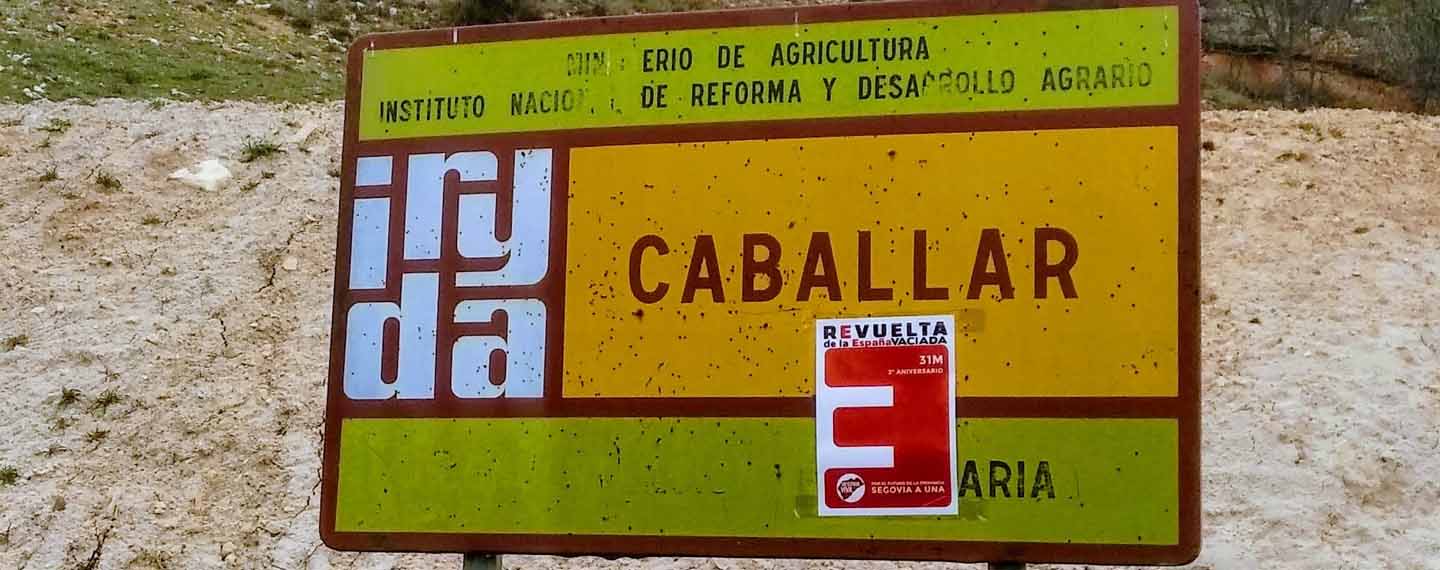Slowly but surely, España vaciada (‘Emptied Spain’), the term defining swathes of the country suffering depopulation and with it inadequate basic services for the few that remain, is making its voice heard.
Last month’s snap election in Castile and León –Spain’s largest region (94,225 square km, 18.6% of the country), comprising nine provinces and bigger than 17 of the 27 EU countries, but where 57% of the 2.4 million inhabitants live in just 3.4% of the territory– saw a new party, Soria ¡Ya! (‘Soria Now!’), created from the anger at abandonment by the political class, win all three seats assigned to the province of that name in the 81-seat regional parliament.
Two other parties, Unión del Pueblo Leonés (Leonese People’s Union, UPL) and Por Ávila (For Ávila), named after the provinces of Ávila and León and to some degree part of the Empty Spain political movement, won, respectively, three and one seats (see Figure 1). UPL has the peculiarity of wanting to break away and form a separate region along with the provinces of Zamora and Salamanca, which they did until 1983 when they were artificially incorporated into the autonomous region of Castile and León (previously the regions of Old Castile and León).
The España vaciada movement, a twist on La España Vacía, a best-selling book published by Sergio del Molino in 2016, ran in several provinces and captured 19,456 votes but no seats. All told these four parties, out of a total of 26 that fielded candidates, won 8.5% of the votes, hardly earth shattering but sufficient to grab headlines away from the two main parties, the conservative Popular Party (PP) and the Socialists (PSOE), but not from the hard-right VOX (founded in 2013), which almost trebled its votes and increased its seats from one to 13.
Alfonso Fernández Mañueco, the region’s PP Premier called an early election in the hope of winning an absolute majority and no longer having to depend for support on the would-be liberal Ciudadanos (Cs), but it was a pyrrhic victory. The PP won 31 seats, two more, but far from the 42 needed to govern alone. Cs lost 11 of its 12 seats. VOX replaced Cs and entered a regional government for the first time.
The PP and Socialists have long paid lip service to levelling up the lives of the rural population, with politicians limiting their visits to villages during electoral campaigns to be photographed with a cow or on a tractor and spouting hollow rhetoric. Pablo Casado, the outgoing national PP leader, on the hustings last month in a region which is a PP fiefdom, called Castile and León ‘the cradle of the Spanish nation. It has been so for five centuries and will remain so’.
Soria Now drew inspiration from the party Teruel Existe (‘Teruel Exists’), one of the three provinces in the region of Aragón, which won a seat in Congress in the 2019 general election and two in the Senate and helped to install the minority coalition government of the Socialist Pedro Sánchez. It can claim some credit for turning the Environment Ministry into the Ministry for Ecological Transition and the Demographic Challenge. Soria Now won 18,390 votes, 42% of the total in Soria and 8,000 more than the PP. Had there been a fourth seat for the province, it would have won it.
| Votes | % of votes | Seats | ||||
| 2022 | 2019 | 2022 | 2019 | 2022 | 2019 | |
| Popular Party (PP) | 378,896 | 433,812 | 31.4 | 31.5 | 31 | 29 |
| Socialists (PSOE) | 362,304 | 479,917 | 30.0 | 34.8 | 28 | 35 |
| VOX | 212,605 | 75,713 | 17.6 | 5.5 | 13 | 1 |
| Leonese People’s Union | 51,878 | 28,057 | 4.3 | 2.0 | 3 | 1 |
| Soria ¡Ya! | 18,390 | – | 1.5 | – | 3 | – |
| Unidas Podemos | 61,290 | 68,787 | 5.1 | 5.0 | 1 | 1 |
| Ciudadanos | 54,186 | 205,850 | 4.5 | 14.9 | 1 | 12 |
| Por Ávila | 13,854 | 9,455 | 1.1 | 0.7 | 1 | 1 |
Castile and León is very much a microcosm of the shift in Spain’s demographics (see Figure 2), particularly the province of Soria whose 89,000 inhabitants would almost fit into the Real Madrid football stadium. Soria and Teruel’s population density of nine people per square km is the sixth-lowest among EU regions (Finland’s Lappi is two).
Between 1950 and 2019 Castile and León lost 471,093 of its inhabitants in a rural exodus, a drop of more than 16%. In 2019 it accounted for 5% of Spain’s population, half that in 1950. In the same period, Spain’s population rose by 19.4 million (+ 69.5%). Some 70% of the region has fewer than 10 people per square km, classifying this area a ‘demographic desert’.
In all, 17 provinces out of a total of 50 forming Emptied Spain have lost around 900,000 inhabitants in the last 20 years, while 10 others, mostly coastal, have seen their population rise by 10 million, lured by the burgeoning tourism industry. There is no let-up in the exodus, albeit at a much slower pace.
The region’s mortality rate is higher than the national average because of its larger segment of the elderly (one quarter of the population is over 65) and its fertility rate lower and way below the replacement rate. Since 1988 Castile and León has recorded more deaths each year than births (this trend for Spain as a whole did not begin until 2015). In 2020 there were just 13,634 births, the lowest since 1941 when records began.
| Spain 2000 | Castilla-León 2000 | Spain 2019 | Castilla-León 2019 | |
|---|---|---|---|---|
| Dependency (1) | 45.8 | 52.2 | 51.1 | 59.7 |
| Ageing (2) | 16.9 | 22.3 | 19.4 | 25.6 |
| Maternity (3) | 16.0 | 13.0 | 18.7 | 17.2 |
| Population replacement (4) | 165 | 140.3 | 78.7 | 57.8 |
| Population trend (5) | 84.7 | 77.4 | 85.0 | 82.2 |
(1) Population under the age of 14 and over the age of 65 as a percentage of the population between 15 and 64 years old.
(2) Over 65s as a percentage of the total population.
(3) Children under the age of five as a percentage of women aged 15 to 49.
(4) Population aged between 20 and 29 as a percentage of the population between 55 and 64.
(5) Children under the age of four as a percentage of those aged five to nine.
Women living longer than men is particularly pronounced in Castile and León where there are 125 females over the age of 65 for every 100 males. Average life expectancy is almost eight years higher than in 1975 at 84.2 years (86.2 years for women and 81.5 for men).
Economically, the region’s per capita GDP has remained at around 93% of Spain’s average over the last 20 years. Unemployment, however, is lower (10% vs 13% for Spain). The two vehicle plants of Renault and one each of Fiat-Iveco and Nissan are a major source of employment (they produce 20% of Spain’s cars and 15% of car exports) along with agriculture, while the public sector in the region accounts for over 16% of jobs.
The main cities, in particular Valladolid, the region’s political capital and seat of all the main institutions, are well served by the high-speed train (from Madrid) and motorways, but not so rural areas.
The lack of banking services is particularly acute. Many branches were closed after the 2008 banking crisis when banks retrenched and were not replaced by ATMs. More than 4,400 villages in Spain had no ATM at the end of 2020, according to the Bank of Spain. In Palencia, for example, one of Castile and Leon’s provinces, only 23 of its 191 villages have an ATM.
So far only one party, Teruel Exists, has managed to win a seat in the national parliament. Will Soria Now be able to build on its success and follow suit and also others waiting in the wings, such as Jaén Merece Más, Cuenca Ahora and Extremadura Vaciada?
There are 20 constituencies/provinces out of 50 in mainland Spain (plus the North African enclaves of Ceuta and Melilla) which represent Emptied Spain and account for 73 of the 350 seats in Congress. Winning these seats at the national level depends on parties reaching the respective thresholds for entering parliament: they vary between 13% and 33% of votes, based on the results of the 2019 general election and using the D’Hondt proportional system.
Meanwhile, Paredes de Nava, a municipality in Castille and León, took depopulation into its own hands and sent three cars to collect Ukrainians who had fled the war-torn country –a drop in the ocean–.
Image: España vaciada (‘Emptied Spain’) poster at the entrance to the village of Caballar (Segovia). Photo: Arturo Francisco Barbero (CC BY-SA 4.0 / Wikimedia Commons).



